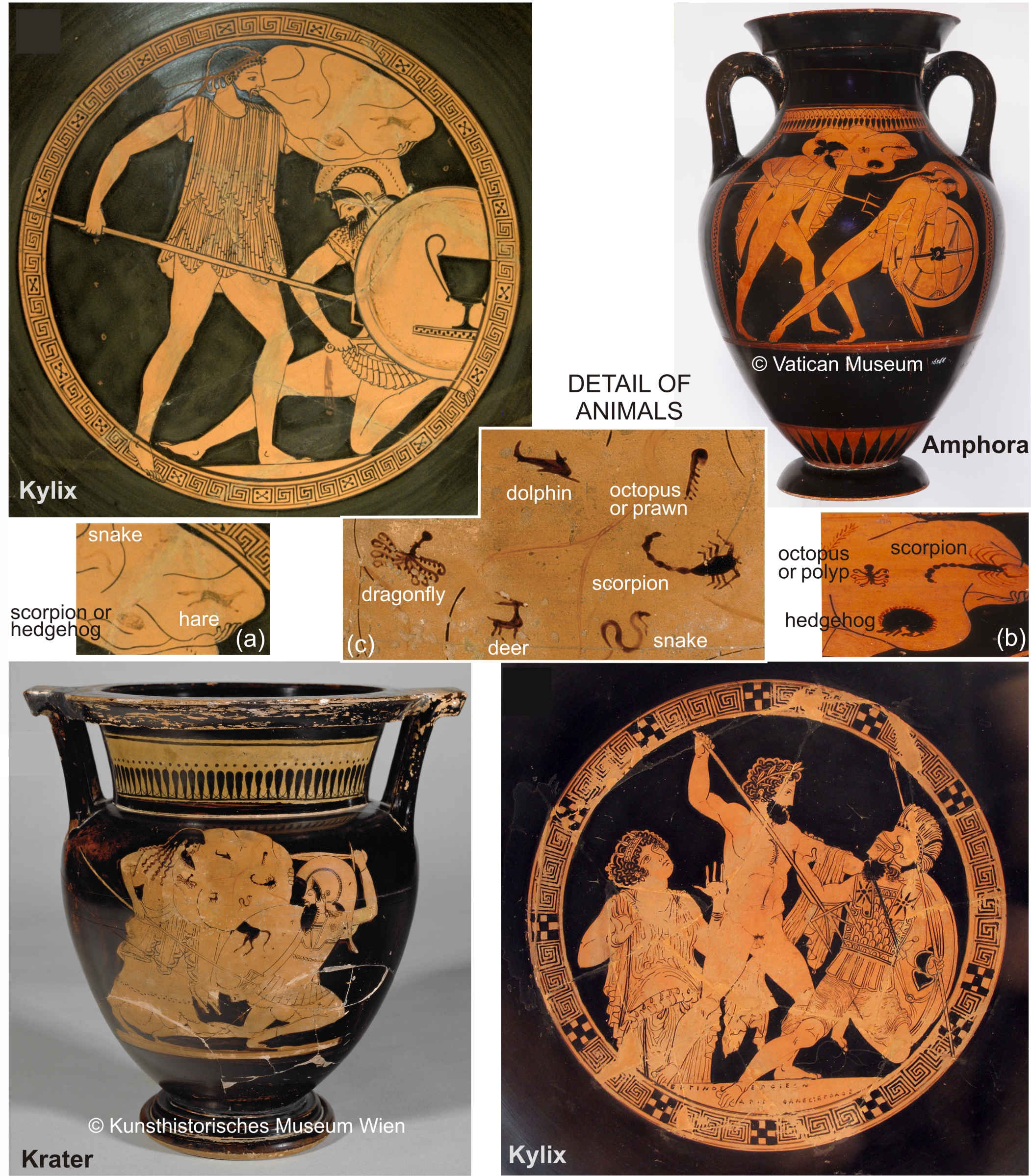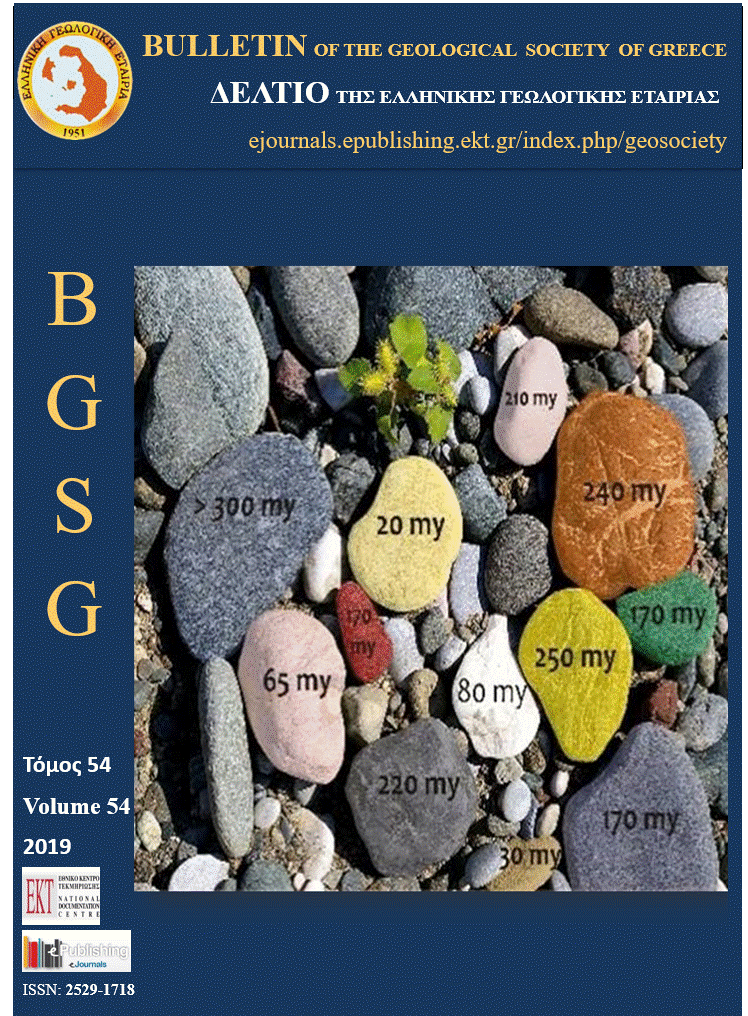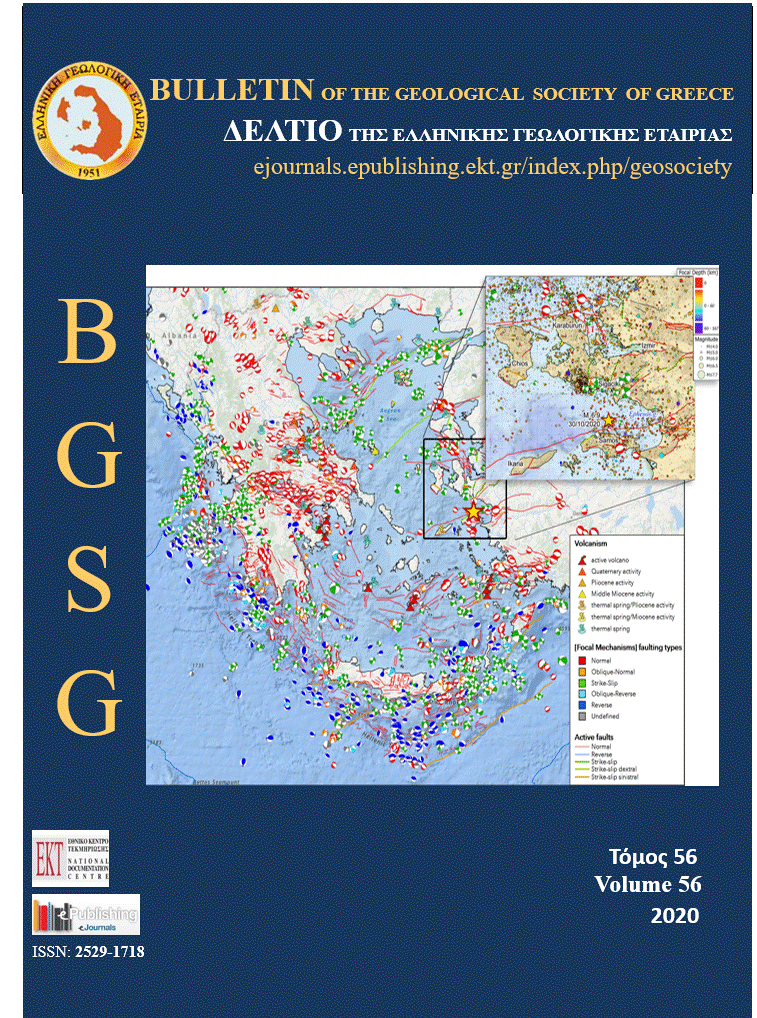Landslide Susceptibility Assessment of Heraklion Prefecture in Crete, Greece
Résumé
The purpose of this particular study is the assessment of landslide susceptibility of Heraklion prefecture area of Crete Island through geospatial analysis in order to present the general susceptibility zonation, so that it may be used as a basis in future extensive and detailed landslide susceptibility research, which will lead to the prevention of possible future landslides. In order to accomplish this task, it is essential to study the geological, geomorphological, geotectonic, hydrological and hydrogeological characteristics of the area, as well as the land use and compare this information with real landslide occurrence data from the study area. Based on this study it became clear that the area is defined by medium to very steep slopes and a geotechnical and geological setting that are extremely favorable for landslides. These reasons, as well as the fact that this prefecture is known to be the most densely populated prefecture of Crete Island created great interest in this area for research of this kind to prevent the loss of human life and the structural damage of properties. In order to study the landslide susceptibility of Heraklion prefecture, firstly, a geodatabase, which includes the landslide inventory, was created. The landslide inventory is consisted of previous landslides, which were collected from related geotechnical reports with all the essential spatial and descriptive information (such as locations and causes of the landslides). Furthermore, the necessary raster and vector data for the geospatial analysis of the area were obtained. Because the landslide susceptibility is a multifactorial problem it was decided to use a relating method to the problem’s nature, which was the methodology of the Analytical Hierarchy Process (AHP), as it is a simple and widely used method for similar studies, which makes it a great tool for this introductory study. In addition, this method was implemented in a GIS environment. For the purpose of the study, ten (10) triggering factors that cause landslides were defined, followed by the creation of a landslide susceptibility assessment map of the study area, depending on the influence of each factor. In accordance with this map, the highest susceptibility mostly corresponds to the mountainous regions of the prefecture. Finally, the success evaluation of the landslide susceptibility model was determined based on the frequency of landslide occurrences of the medium, high, and very high susceptibility zones. Consequently, the model was characterized as 90.48% successful, according to bibliography and the landslide inventory.
Article Details
- Comment citer
-
Adam, S., Athinelis, I., Krassakis, P., & Nomikou, P. (2022). Landslide Susceptibility Assessment of Heraklion Prefecture in Crete, Greece. Bulletin of the Geological Society of Greece, 59(1), 23–67. https://doi.org/10.12681/bgsg.28703
- Numéro
- Vol. 59 No 1 (2022)
- Rubrique
- Natural Hazards

Ce travail est disponible sous licence Creative Commons Attribution - Pas d’Utilisation Commerciale 4.0 International.
Authors who publish with this journal agree to the following terms:
Authors retain copyright and grant the journal right of first publication with the work simultaneously licensed under a Creative Commons Attribution Non-Commercial License that allows others to share the work with an acknowledgement of the work's authorship and initial publication in this journal.
Authors are able to enter into separate, additional contractual arrangements for the non-exclusive distribution of the journal's published version of the work (e.g. post it to an institutional repository or publish it in a book), with an acknowledgement of its initial publication in this journal. Authors are permitted and encouraged to post their work online (preferably in institutional repositories or on their website) prior to and during the submission process, as it can lead to productive exchanges, as well as earlier and greater citation of published work.





